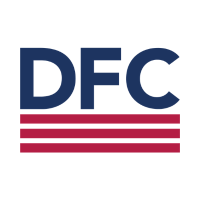
U.S. Department of Defense
Description
The U.S. Department of Defense (DoD) operates as a unique and significant funding entity within the innovation ecosystem, distinct from traditional venture capital firms. Its primary mission is to provide the military forces needed to deter war and protect national security, which increasingly relies on cutting-edge technology. Rather than making equity investments, the DoD primarily funds private sector innovation through contracts, grants, and cooperative agreements, aiming to accelerate the development and adoption of dual-use technologies that serve both commercial and defense needs. This approach allows the DoD to tap into the agility and innovation of startups and small businesses, addressing critical capability gaps and maintaining a technological advantage.
Key initiatives include the Defense Innovation Unit (DIU), which focuses on rapidly prototyping and scaling commercial technologies for military use. DIU typically issues Other Transaction Authority (OTA) contracts, designed for speed and flexibility, enabling companies to transition solutions from prototype to production. Another cornerstone is the Small Business Innovation Research (SBIR) and Small Business Technology Transfer (STTR) programs, where the DoD is the largest participating agency. These programs provide seed funding for R&D, with Phase I grants often up to $250,000 and Phase II grants potentially exceeding $1.5 million, supporting the development of innovative solutions from concept to prototype.
The DoD's funding mechanisms are not designed for financial return on investment in the venture capital sense, but rather for strategic return in terms of national security and technological superiority. Companies engaging with the DoD benefit from significant non-dilutive capital, access to unique testing environments, and the potential for large government contracts. Since its inception in 2016, DIU alone has awarded over $1 billion in contracts, demonstrating the scale of its commitment to integrating commercial innovation. The department's vast research and development budget, which can exceed $100 billion annually, underscores its capacity to drive technological advancement across a wide array of sectors, from artificial intelligence and cybersecurity to advanced materials and space technologies.
The engagement process typically involves responding to specific solicitations, participating in challenges, or direct outreach through various innovation hubs like AFWERX. While the "check sizes" are contract values rather than equity stakes, they represent substantial capital injections for technology development and commercialization. The DoD seeks solutions that can be rapidly fielded, prioritizing technologies that offer a clear strategic advantage and can be integrated into existing defense systems. This makes it a crucial partner for startups and established companies alike looking to apply their innovations to critical national security challenges.
Investor Profile
U.S. Department of Defense has backed more than 232 startups, with 37 new investments in the last 12 months alone. The firm has led 186 rounds, about 80% of its total and boasts 66 exits across its portfolio.
Investment Focus Highlights
- Concentrates on Grant, Debt Financing, Pre Seed rounds (top funding stages).
- Majority of deals are located in United States, Canada, Australia.
- Strong thematic focus on Biotechnology, Health Care, Medical.
- Led 34 rounds in the past year.
- Typical check size: $100K – $5M.
Stage Focus
- Grant (97%)
Country Focus
- United States (85%)
- Canada (6%)
- Australia (2%)
- Finland (2%)
- Israel (1%)
- Spain (1%)
Industry Focus
- Biotechnology
- Health Care
- Medical
- Manufacturing
- Pharmaceutical
- Therapeutics
- Education
- Medical Device
- Life Science
- Universities

Frequently Asked Questions
Learn who this investor regularly partners with—both firms and angels—and explore their latest activity.











